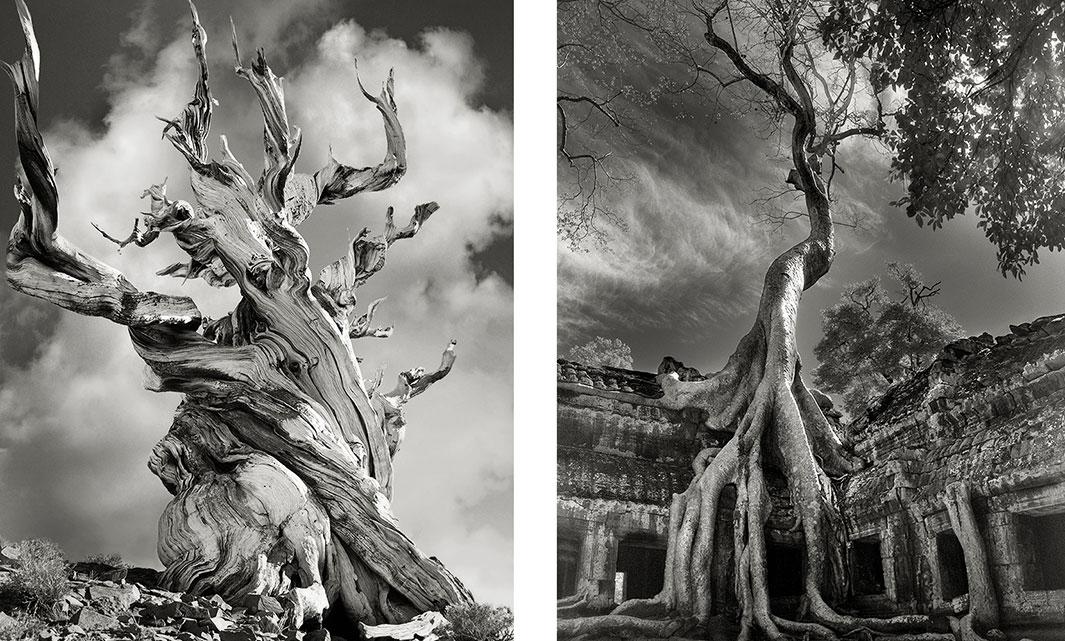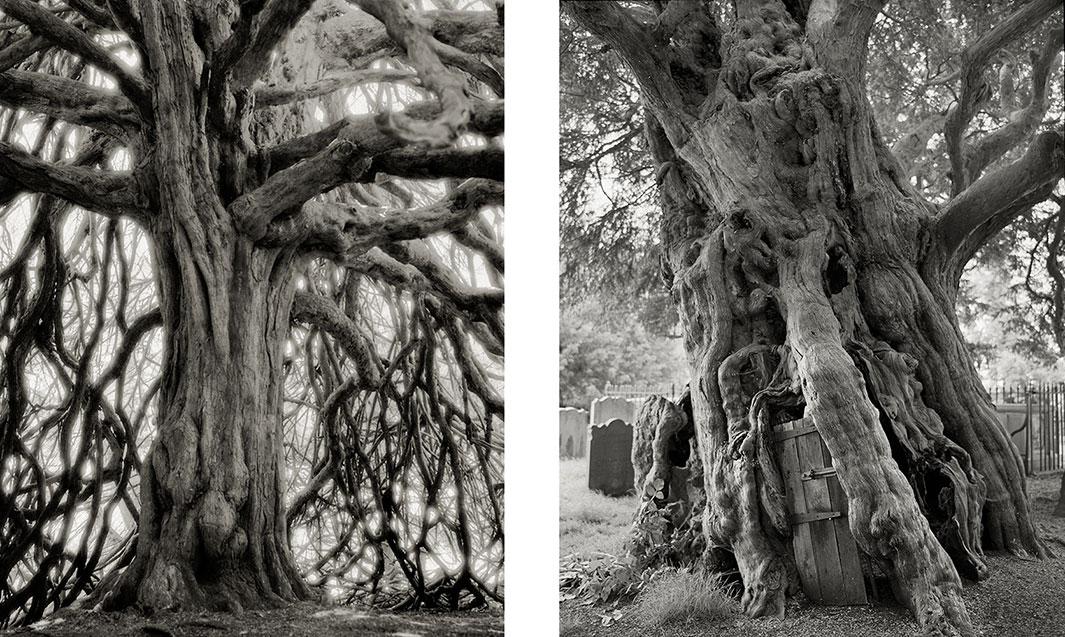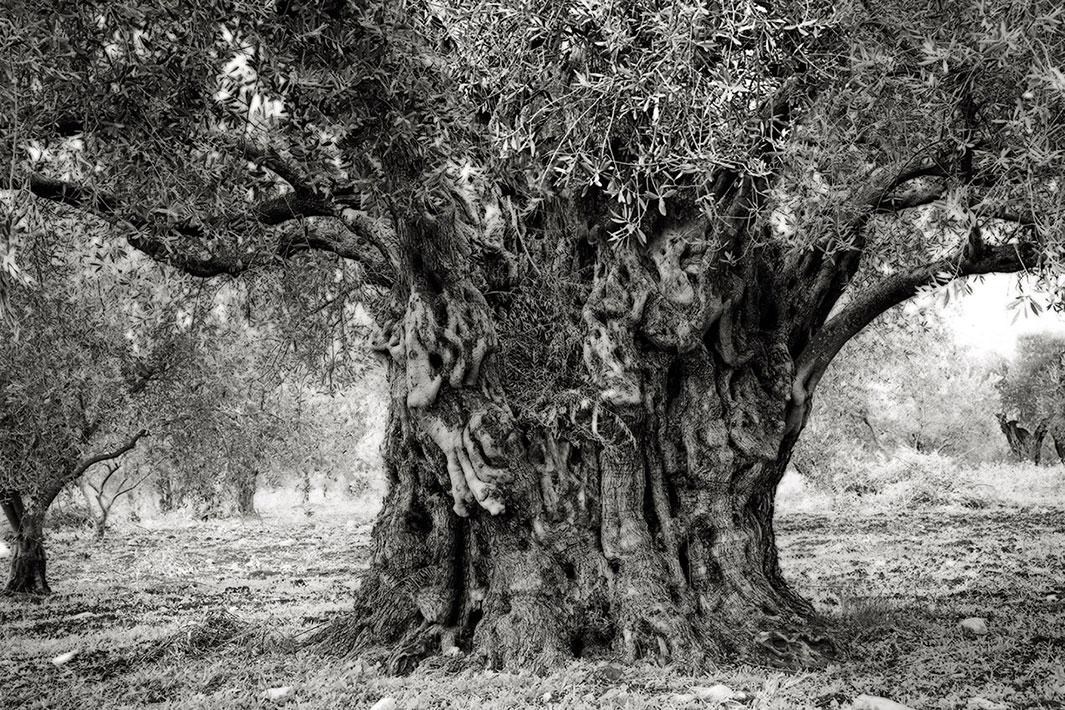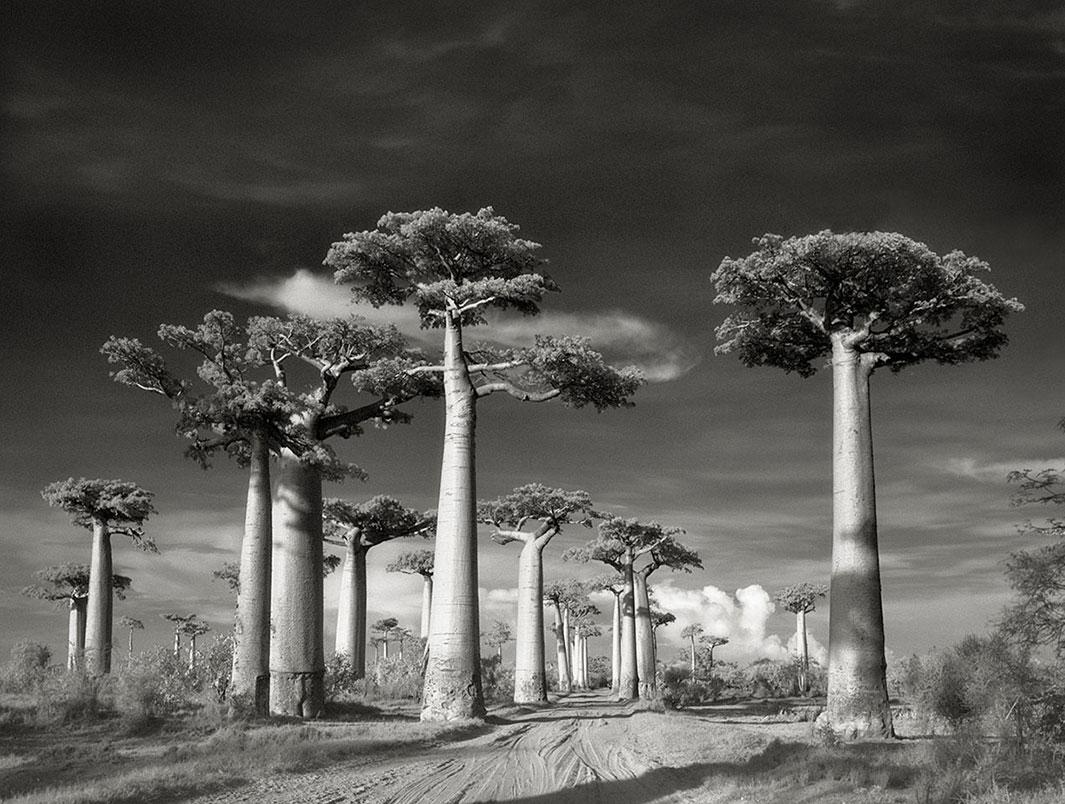Beth Moon’s father made an impression on her when he told stories about his childhood learning the names of birds, trees, and flowers. Around 14 years ago, while living in England, she began to photograph trees, traveling around the country in search of some of the oldest yews. She then moved to the West Coast of the United States, adding images of sequoias, redwoods, bristlecone pines, and Joshua trees to her collection. She earned money by selling prints that helped further fund trips around the world to places like South Africa, Madagascar, Yemen, and Israel.
Those images were published by Abbeville Press last year as a book, Ancient Trees: Portraits of Time.*
Her criteria when traveling to photograph the trees are simple. She looks for trees that are old, immense, or have a “notable” history. Before traveling, she scouts locations by referencing both history and science books. But even with her prep, things didn’t always go smoothly when she got there.

Beth Moon

Beth Moon
“Sometimes I would arrive only to find an obstruction in front of the tree, or waist high grass, any number of obstacles,” she wrote via email. “Often times it was very difficult to find them. Hard to believe! For example, in Madagascar, I drove three hours with my guide to what I was told was the largest baobab in the region south of Toliara. We drove around for hours before we asked the help of a local chief of the nearby village. He asked for the equivalent of thirty cents for his time to show us the tree. The entire village followed, running behind the jeep, it was quite exhilarating!”
Even when she finds the trees, things can get complicated. When she arrived at the baobab, hundreds of bats were hanging from its branches and a large cobra was hanging out in the grass below. She often has to catch her breath to take in the grandeur of what she’s photographing.
“It’s hard to describe what it’s like to turn up at a location,” she wrote. “Since a lot of anticipation goes into the journey, excitement is inevitable. The size usually overwhelms me, there is a lot to take in. I don’t even consider taking out equipment until I am in a state of mind to concentrate and be able to work a camera.”

Beth Moon
Moon said spending 14 years working on the project was necessary since she needs time to reflect and to delve deeper into the project.
“I don’t feel like I can get to the true essence of a project without staying with it for a long time,” she added. She also prints the image with platinum printing that “gives tones that range from cool black, neutral grays, to rich sepia browns.” The printing method—Moon hand paints a tincture onto heavy watercolor paper and exposes it to light—dates back to the 19th century, which seems appropriate since Moon has photographed trees as old as 4,000 years.
“I hope to speak about survival—not only of man and nature, but of photography as well,” she wrote. “I wanted to use a process that would reflect this kind of age; that could express this type of aesthetic. A platinum print can last for centuries, drawing on the common theme of time and continuance, pairing photographic subject and process.”
Signed copies of the book are available from Corden Potts Gallery in San Francisco. They are also showing an assortment of her work until Feb. 28.

Beth Moon

Beth Moon
Correction, Jan. 28, 2015: This post originally misspelled Abbeville Press’ name.
